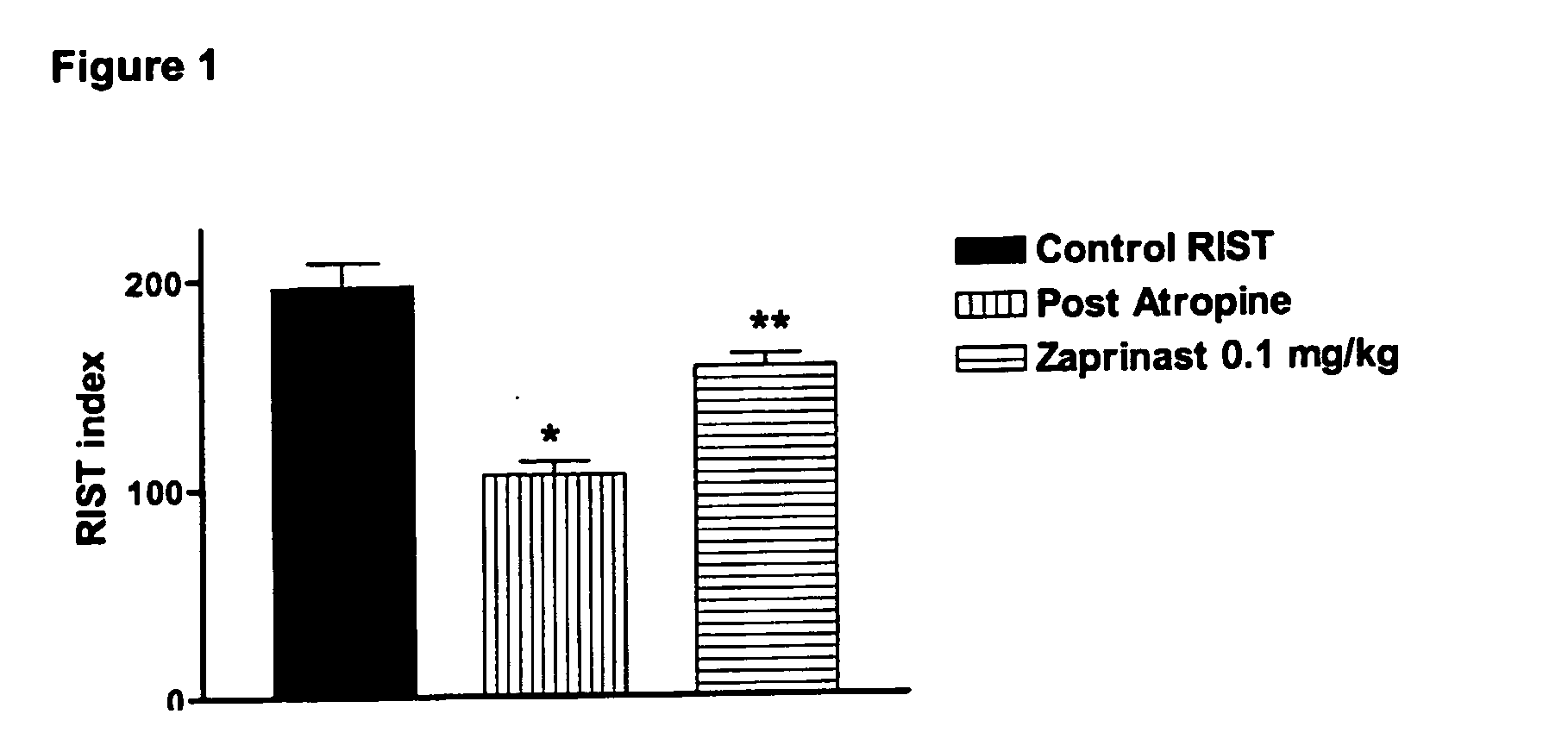Use of phosphodiesterase antagonists to treat insulin resistance
a phosphodiesterase antagonist and insulin resistance technology, applied in the field of insulin resistance treatment, can solve the problems of complete exhaustion of the pancreas and insufficient hepatic glycogen storage capacity to handle all glucose, and achieve the effect of reducing insulin resistan
- Summary
- Abstract
- Description
- Claims
- Application Information
AI Technical Summary
Benefits of technology
Problems solved by technology
Method used
Image
Examples
example
Methods for Reversal of HISS-Dependent Insulin Resistance Using a Phosphodiesterase Inhibitor in Normal Rats
[0051] Male Sprague Dawley rats (250-300 g) were allowed free access to water and normal rodent food for 1 week prior to all studies. Rats were fasted for 8 hours overnight and fed for 2 hours before the start of study.
[0052] Rats were anesthetized with pentobarbital-sodium (65 mg / ml, ip injection, 0.1 ml / 100 g body weight). Animals were placed on a heated thermostatically controlled surgical table to maintain body temperature during surgery and the experimental procedure.
[0053] An extra-corporeal arterial-venous shunt (the loop) was established between the right femoral artery and right femoral vein, according to a published, standard operating procedure developed in our laboratory (Xie et al., 1996). The loop allows for regular blood sampling of arterial blood throughout the experiment as well as infusion of intravenous drugs and monitoring of arterial blood pressure.
[0...
PUM
| Property | Measurement | Unit |
|---|---|---|
| resistance | aaaaa | aaaaa |
| insulin resistance | aaaaa | aaaaa |
| pharmaceutical composition | aaaaa | aaaaa |
Abstract
Description
Claims
Application Information
 Login to View More
Login to View More - R&D
- Intellectual Property
- Life Sciences
- Materials
- Tech Scout
- Unparalleled Data Quality
- Higher Quality Content
- 60% Fewer Hallucinations
Browse by: Latest US Patents, China's latest patents, Technical Efficacy Thesaurus, Application Domain, Technology Topic, Popular Technical Reports.
© 2025 PatSnap. All rights reserved.Legal|Privacy policy|Modern Slavery Act Transparency Statement|Sitemap|About US| Contact US: help@patsnap.com

